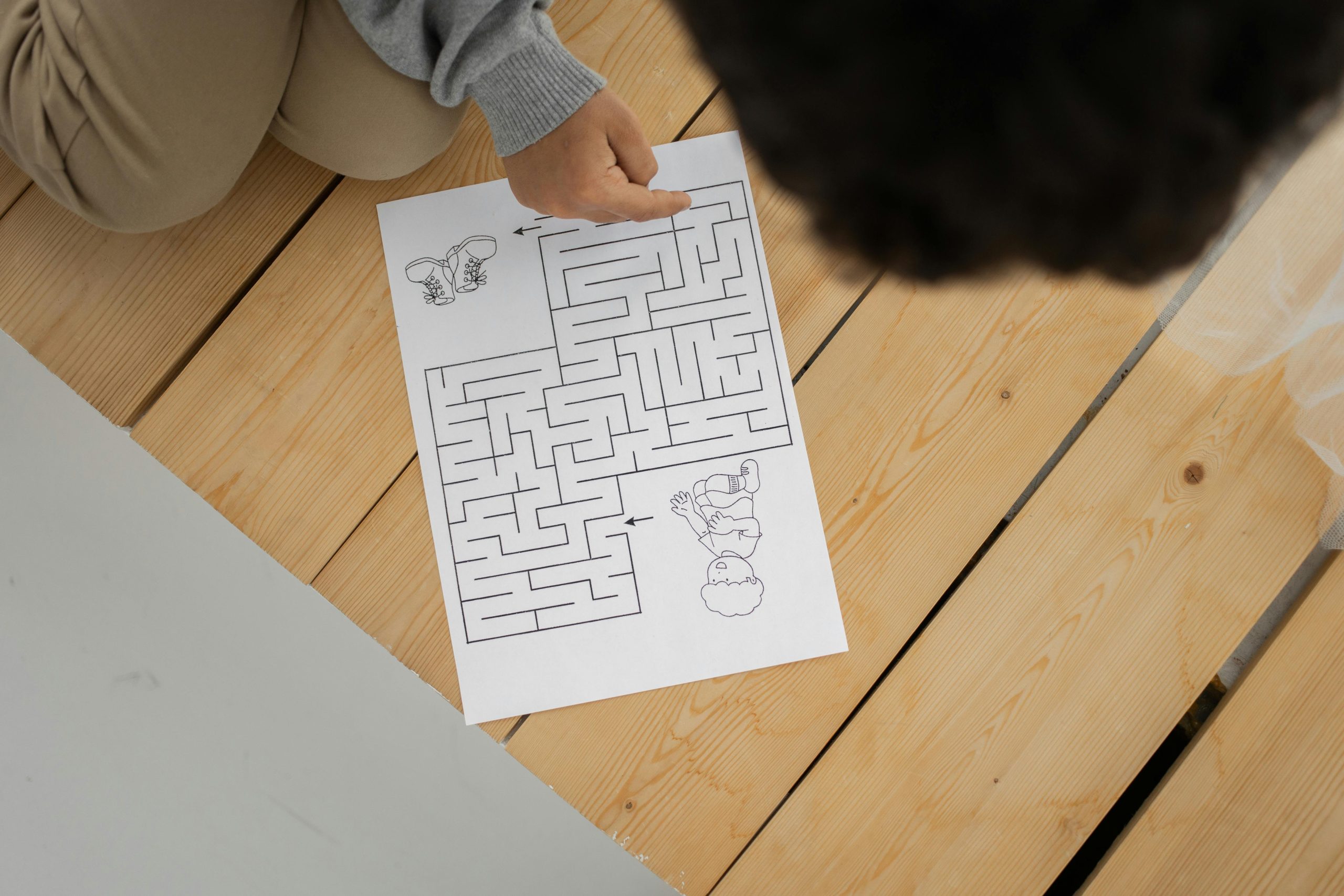A Brief Overview of the Adolescent Brain

Adolescent brain development is a complex and fascinating journey. The brain goes through major changes during this time that affect behavior, judgment, and emotional control. It is a time of great transition. Regretfully, there are a lot of misconceptions about teenagers and what they do, which causes confusion and annoyance. Dispelling these myths is essential because it shows that behavior that may seem unreasonable or rebellious is frequently a normal aspect of brain development. Not only is it advantageous, but it is critical for parents, teachers, and society as large to comprehend the adolescent brain. Understanding these developmental shifts can help us create environments that promote empathetic interaction, sound development, and efficient communication. With this insight, we can help teenagers through this crucial phase with compassion and empathy, enabling them to mature into well-rounded adults.
A Comprehensive Guide to the Teen Brain

Adolescent brain development is a complex and fascinating journey. The brain goes through major changes during this time that affect behavior, judgment, and emotional control. It is a time of great transition. Regretfully, there are a lot of misconceptions about teenagers and what they do, which causes confusion and annoyance. Dispelling these myths is essential because it shows that behavior that may seem unreasonable or rebellious is frequently a normal aspect of brain development. Not only is it advantageous, but it is critical for parents, teachers, and society as large to comprehend the adolescent brain. Understanding these developmental shifts can help us create environments that promote empathetic interaction, sound development, and efficient communication. With this insight, we can help teenagers through this crucial phase with compassion and empathy, enabling them to mature into well-rounded adults.
The Science Of The Development Of The Teenage Brain
- Neurological Development and Reduction: The brains of teenagers change quickly as new connections are made by growing neurons and old ones are eliminated. The brain’s network becomes more specialized and efficient as a result.
- Hormonal Effects: Estrogen and testosterone levels rise, affecting mood and behavior. Teenage angst and impulsivity are frequently the result of these hormones’ ability to intensify feelings and affect judgment.
- Limbic system and prefrontal cortex: The prefrontal cortex is still developing and is in charge of impulse control and decision-making. The limbic system, on the other hand, is more likely to be active and deals with emotions and rewards. This imbalance creates a window of opportunity for learning and creativity, but it can also lead to risk-taking behaviors.
A fresh viewpoint on teenage behavior is provided by an understanding of these developments. It serves as a reminder that helping kids get through this life-changing stage requires open communication, tolerance, and support. Understanding the science underlying their growth will help us to provide a supportive atmosphere that will enable them to flourish.
Changes in Adolescent Brain Development

Adolescence is a time of extraordinary cognitive development. Teenagers see an increase in their capacity for abstract thought and reasoning, which enables them to comprehend difficult ideas and consider the future in ways they were previously unable to. They will be able to take on more difficult coursework and participate in insightful conversations about the world around them thanks to this development, which is essential for both academic success and personal development.
- Identity Construction: Due in large part to their developing cognitive capacities, teenagers start to define their own identities and personal beliefs.
- Confusion and Exploration: In the end, it results in a stronger sense of self and a deeper knowledge of their place in the world. It’s a time of discovery and occasionally perplexity.
- Memory and Learning: Teenagers are better able to retain information, solve problems, and apply knowledge in novel ways because of their developed brains.
Understanding the significance of these alterations enables us to better understand the complexity of the adolescent brain. It’s important to support teenagers as they realize their full potential rather than just helping them get through the difficulties of puberty. We can support kids in thriving during this critical developmental stage by creating an atmosphere that promotes growth, curiosity, and knowledge.
Visit the websites of Headspace and Raising Children Network for additional information on promoting teenage brain development. These materials provide educators and parents with insightful knowledge and direction.
Taking Chances and the Adolescent Brain

Adolescence is often associated with heightened risk-taking and an exploration of novel experiences. The changing architecture of the brain is fundamental to this behavior. The interesting neural underpinnings of such movements reflect an era of significant development and evolution.
- The area of the brain that controls impulse control and decision-making, the prefrontal cortex, is still growing. As a result, the more emotionally charged limbic system takes control and frequently exhibits riskier behaviors.
- An important neurotransmitter linked to the brain’s reward system, dopamine, is crucial for adolescent behavior. It promotes the pursuit of benefits, increasing the allure of novel experiences and dangers.
The dopamine-fueled quest for rewards can help to explain why teens are drawn to new and occasionally risky activities. But it’s also an essential part of education and social growth, encouraging autonomy and pushing limits.
It takes tact to guide teenagers through these dangerous behaviors. Both open communication and the establishment of precise boundaries and expectations are crucial. They can be safely satisfied with new experiences while maintaining their safety if safe exploration is encouraged and opportunities for healthy risk-taking are given. It’s about helping them make wise judgments by comprehending the neural underpinnings of their behavior. By doing this, we may assist children in confidently navigating this turbulent time and growing into resilient, well-adjusted individuals.
Visit the Raising Children Network for more information on fostering teenage brain development, as well as the website Headspace. These materials provide educators and parents with insightful knowledge and direction.
Adolescent Brain Effects of Sleep Patterns

The biological clock that controls our sleep-wake cycle, known as circadian rhythms, undergoes major changes during adolescence. Teens are frequently pushed by these changes to stay up later at night, but their normal sleep cycles aren’t compatible with early start hours for school. Their mental and mental well-being may suffer as a result of this mismatch, which can result in chronic sleep deprivation.
- Sleep is an essential time for the adolescent brain to digest and integrate new information, not only relax. It helps with memory, learning, and emotional control.
- Teens who don’t get enough sleep may find it more difficult to manage the difficulties of puberty since it might affect their judgment, make them more irritable, and increase stress.
Promoting sound sleeping practices is crucial. Easy actions can have a significant impact. It can be helpful to create a sleep-friendly environment, restrict screen time before bed, and establish a regular sleep pattern. It’s about helping teens get a good night’s sleep so they can wake up feeling rejuvenated and prepared for the day. We promote their achievement, well-being, and development by placing a high priority on sleep.
It’s critical to comprehend the significance of sleep and how it affects the developing adolescent brain. Getting adequate sleep is important, but so is making sure those sleeps are restorative and in line with their biological requirements. Teens can successfully traverse these changes if they have the correct habits and support.
Encouraging Adolescent Brain Development

Teenage brain health is greatly aided by mental stimulation, physical activity, and good nutrition. While consistent physical activity fortifies brain connections, a healthy diet supports emotional stability and cognitive performance. Teenagers are better prepared for complex problem-solving and creativity when they participate in demanding and varied learning situations that further improve brain plasticity.
- For social and emotional development, it is equally important to create a supportive environment. Teens flourish in environments that support self-expression and discovery, as this builds empathy and resilience.
- Establishing such environments involves parents and educators actively listening, providing direction, and honoring the individual’s path to independence.
Adult supervision and boundaries are essential. Teenagers are better able to handle the difficulties of puberty when there are clear expectations and constant assistance. By establishing limits, we give them a secure environment in which they can explore their identities and make errors without worrying about being judged. This methodology not only facilitates their present growth but also establishes the foundation for their eventual maturity.
Learning about the adolescent brain requires time and exploration. We can help our teenagers go in the direction of success and well-being by emphasizing healthy eating, physical activity, cerebral stimulation, and providing a loving atmosphere. It’s about finding the right mix between direction and autonomy, letting them explore while making sure they have the resources they require to succeed.
In Conclusion
Understanding and assistance are essential on the road of navigating the teenage brain. Resilience and growth are fostered by the right amount of direction and patience. Through accepting the intricacies of this growth phase, we can establish surroundings that promote sound judgment and emotional control. Teenagers are not only better prepared for adulthood thanks to this voyage, but it also gives them more creativity and exploration in life. Let’s pledge to raise our children with empathy and provide a future in which they can prosper.
Understanding the Teenage Brain FAQs
Exercise has a positive impact on the teenage brain, promoting neuroplasticity, which is the brain’s ability to form and reorganize synaptic connections, especially in response to learning or experience. Regular physical activity can improve cognitive function, mood, and even academic performance by increasing blood flow and oxygen to the brain. Additionally, exercise can help mitigate some of the negative effects of stress on the teenage brain, supporting overall mental health.
Nutrition plays a vital role in the development and functioning of the teenage brain, providing the necessary nutrients for cognitive development and mental health. Essential fatty acids, vitamins, and minerals support neural development, neurotransmitter function, and brain plasticity. Poor nutrition can lead to cognitive deficits, mood disturbances, and impaired academic performance, highlighting the importance of a balanced diet for teenagers.
Sleep plays a crucial role in the development and functioning of the teenage brain, particularly because it aids in memory consolidation and cognitive function. Teenagers require about 8-10 hours of sleep per night for optimal brain function, but many do not get enough, leading to impaired learning, mood, and decision-making abilities. Lack of sufficient sleep can exacerbate the natural tendency for impulsivity and risk-taking in teenagers.
Social media can have a profound impact on the teenage brain, affecting attention, self-esteem, and social comparison. The constant stimulation and immediate feedback loops from social media can lead to shorter attention spans and a need for instant gratification. Moreover, the tendency to compare oneself to others on social media platforms can impact mental health and self-esteem, making teenagers more susceptible to anxiety and depression.
The teenage brain processes emotions differently due to the ongoing development of the prefrontal cortex and the heightened activity in the amygdala, the brain’s emotional center. This developmental stage leads to more intense emotional experiences and a tendency for teenagers to rely more on the amygdala for emotional processing, making it harder for them to regulate emotions compared to adults. As the prefrontal cortex matures, teenagers gradually get better at emotional regulation, leading to more adult-like processing of emotions.
Stress can have a significant impact on the teenage brain, affecting its development, function, and overall mental health. Chronic stress can alter brain structure and function, particularly in areas involved in memory, emotional regulation, and executive function, making it harder for teenagers to manage emotions and make decisions. Additionally, high levels of stress during adolescence can increase the risk of developing mental health disorders such as anxiety and depression.
Peer influence plays a significant role in the development of the teenage brain, affecting decision-making, risk-taking, and social learning. The teenage brain is highly sensitive to social acceptance and rejection, and this sensitivity can drive teenagers to conform to peer behaviors and attitudes, even when they conflict with their own values or safe practices. This susceptibility is due to the social nature of brain development during adolescence, emphasizing the importance of positive peer relationships for healthy development.
Hormones significantly influence the development of the teenage brain, particularly during puberty when fluctuations in hormones like estrogen and testosterone can affect mood, behavior, and cognitive abilities. These hormonal changes can enhance the emotional intensity and stress response, making teenagers more reactive to social stimuli and stress. The interaction between hormonal changes and brain development contributes to the characteristic emotional and social behaviors observed during adolescence.
Teenagers are more likely to take risks due to the ongoing development of the prefrontal cortex, which is responsible for decision-making and impulse control. This part of the brain is not fully developed until the mid-20s, leading to a greater propensity for risk-taking behaviors. Additionally, the reward system in the teenage brain is highly active, making risky activities more appealing.
The teenage brain is more susceptible to addiction because the reward pathways are more sensitive while the decision-making parts of the brain, like the prefrontal cortex, are still developing. This imbalance makes teenagers more likely to engage in experimental behaviors, including drug use, and the heightened sensitivity to rewards makes these behaviors more reinforcing. Consequently, substances or behaviors that trigger these reward pathways can quickly lead to addictive patterns in teenagers.

Jasmine Duque-Love is a mother of one and a practicing physiotherapist with a Phd in Physiotherapy

